ASLEEP AT THE WHEEL
when Ray Benson is driving you are never
ASLEEP AT THE WHEEL
Norman Warwick is reminded by reading Geoffrey Himes
By the time I ceded my magazine Sidetracks to co-found Detour with David Deverson, (a fine interviewer and writer) somewhere around 1990 I already had most of the Asleep At The Wheel albums then released. I didn´t play them that often as they were just a little bit outside my normal singer-songwriter genre that Paul Simon has described as a ´seventies phenomenon´. Nevertheless the band adapted enough good songs in to their Western Swing sound to handsomely reward my occasional playings. And much though I rather snobbishly hated to admit it, that irresistible Texas swing made a sweet change from Dylan and Cohen and other prophets of doom Io usually listened to.
In fact one of the tracks, Hot Rod Lincoln, even grabbed the attraction of my ten year old son who then didn´t believe that a Hard Rain was Gonna Fall or that his world was on the Eve Of Destruction. Andrew loved the song, and wanted it played in the car over and over again. When he learned that Deverson and I were heading off to a Wembley country music festival to gather material for our first edition of Detour
he only began to pay any attention when I told him Asleep At The Wheel would be on the extensive bill.

Songfacts reveal that, according to a now-defunct official site, “Hot Rod Lincoln” was originally written by Charlie Ryan. It was first recorded and released by Charlie Ryan and The Livingston Brothers (left) in 1955. It tells the second half of the story started by the song Hot Rod Race, recorded in 1951 by Arkie Shibley and his Mountain Dew Boys, as referenced by the opening: “Have you heard this story of the Hot Rod Race, when Fords and Lincolns was settin’ the pace? That story is true, I’m here to say; I was drivin’ that Model A.” While the song tells of a race between a Lincoln and a Cadillac on the Grapevine grade in California, the actual location was on the Lewiston grade in Idaho.
The most iconic line from the song is: ´Son, you’re gonna drive me to drinkin’ if you don’t stop drivin’ that Hot Rod Lincoln!´.
Was there really a hot-rod Lincoln? Yes and no. Actually, it was a rebuilt car with the body of a Model “A” coupe set into the frame of a 1941 Lincoln, along with a “hopped-up” Lincoln engine block. However, at the time of this song’s writing, Ryan built a second car, this time with a chop-shop melding of a 1930 Model “A” Ford coupe and a wrecked 1948 Lincoln. It is this second restored car with which has Ryan toured.

Both the songs Hot Rod Lincoln and Hot Rod Race are defining anthems of the hot rod community and 1950s car song culture. Hot Rod Lincoln has appeared in the soundtracks to The Beverly Hillbillies and MTV’s Beavis and Butthead. The song was the only hit for Commander Cody and His Lost Planet Airmen, (right) who were a county-rock group formed at the University of Michigan. Commander Cody is lead singer and piano player George Frayne.

Among some of the incredible acts I saw at Wembley that year, Asleep At The Wheel were the highlight for me. Even with two of my favourite songwriters, Willie Nelson and Townes Van Zandt on the bill it was Ray Benson and his fellow musicians who blew me away. Among the many artists we interviewed, Ray Benson, grey now (right) where he once was shocking red, proved both interesting and interested and when I told him of my son´s love of Hot Rod Licoln he signed a dedicated autograph to him with an appropriate legend about the song beneath.his autograph.
The band then were already in their twentieth year, and now here I am thirty years later celebrating their silver anniversary, in a daily blog that grew out of that quarterly magazine I was then co-producing. And I´m reading an article by my favourite music journalist, Geoffrey Himes, taking readers back fifty years to the place where it all started..
´If only they could remember where the house was,´ Mr Himes sighs.
That’s how I find myself following two vans carrying five band members and assorted friends down the backroads of Great Cacapon, West Virginia. The leaves, turning a gorgeous gold and scarlet, are a dangerous distraction, for the ridge-top roads are only one-and-a-half lanes wide and the slopes just off the blacktop are precipitous. After many miles of this, the vans turn onto an even narrower gravel road, but after a few more miles, they pull off to the side.
Ray Benson, the only musician in every version of Asleep at the Wheel over its five decades, unfolds his six-foot, seven-inch frame and steps from the silver van to survey the landscape. His grey beard extends the length of his sternum below the brim of his black-mesh baseball cap and between the lapels of his gray-corduroy blazer. It has been 49 years since he last lived in this neighbourhood, but he visited 10 years ago and surely he should remember his way. “All the trees that I remember,” he mutters, “are no longer here, and all the trees that are here, I don’t remember.”
Standing nearby are Leroy Preston, Chris O’Connell and Danny Levin, who all lived in the Magnolia House with Benson in 1970-71. Their memories are even dimmer than Benson’s. But those four musicians, along with Lucky Oceans (now stuck in Australia behind pandemic regulations), were college-age kids when they honed their musical chops and their musical identity at the ramshackle house hidden somewhere in these woods.
Those skills and that identity carried them into Billboard’s top-10 country chart, onto the Grammy stage, and into studios with collaborators such as Willie Nelson, George Strait and Emmylou Harris. If they could only find the building, they might reconnect with their beginnings. After all, like comic-book superheroes, every band has its own origin story. And this one started in the suburbs of Philadelphia where Ray Seifert and Reuben Gosfield were childhood pals long before they adopted the stage names of Ray Benson and Lucky Oceans.
“I can’t remember a time when I didn’t know Reuben,” Benson now says. “We were both obsessed with music and kept forming bands together. We’d go down to the pawn shops on South Street and buy blues records. We’d see Johnny Cash on TV and hear Motown on the radio. My cousin gave me an old wire recorder with a live recording of Big Bill Broonzy.”
“Ray and I went to a Gene Autry concert as kids,” Gosfield adds over a Zoom call from Australia’s West Coast, “and Gene rode out onstage on his horse. You don’t forget stuff like that. Ray and I went to see John Coltrane at that famous concert at Temple University. To be in Coltrane’s presence, a man so dedicated to music, was awe-inspiring. Ray shook his hand and said, ‘Mr. Coltrane, I enjoyed your concert very much.’”
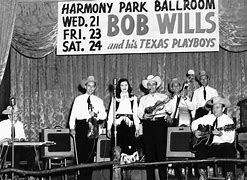
It was this breadth of enthusiasms that made Asleep at the Wheel such an unusual band. They could make you laugh at a country novelty song or cry over a honky-tonk ballad, but they could also swing like a jazz band and stomp like a rock band. They were trying to figure out how to put all these pieces together when they discovered Bob Wills & The Texas Playboys, (right) the great pre-World War II big band that personified Western swing. To this strong sense of history, Asleep at the Wheel brought an irreverent, ’60s energy. Gosfield would often leap up after a virtuoso steel solo and do his patented “crazy fool” dance.
Ray’s older sister Sandy was a student at Northeastern in Boston, and her boyfriend was Leroy Preston’s roommate. Benson and Gosfield jumped on Sandy’s invitation to come visit, and they spent hours jamming with Preston, who grew up on a Vermont farm listening to hardcore country music. Something clicked in Benson’s mind. He was tired of cities and wanted to join the era’s back-to-the-country movement. If they were going to do that, it would make sense to form a country band that the locals might want to hear.
“I’d been in a rock band that played frat parties,” Preston remembers, “but I decided that was going nowhere fast. So I sold my drum kit, bought a guitar and listened to Hank Williams’ Greatest Hits and Robert Johnson’s King of the Delta Blues Singers non-stop. That got me writing songs. Ray had heard Commander Cody at Antioch College in Ohio, and he had the idea that we could do that kind of country-rock without the rock. That appealed to me, because this wasn’t just an excuse to get together and play. There was a concept for the band.”
Preston’s thick hair and thin mustache are now snowy, and he wears black-frame glasses. He doesn’t even pretend to know where the house might be. Our three-vehicle caravan goes down one side road and then another. At one point, we walk down a pathway past a “No Trespassing” sign. A red, wet stripe runs down the middle of the green grass. Darrell Arnica, an early roadie for the band who still lives in the area, points out a hunter’s blind nearby and says, “Someone dragged a deer carcass out of here not long ago.”
In the spring of 1970, Preston and Benson had driven down to Columbia, Maryland, where Gosfield was attending a different Antioch campus. A friend in Columbia said his parents owned an apple orchard in Paw Paw, West Virginia, and the musicians could camp out in the log cabin there. This was just what they were looking for: a rent-free place to work on their musicianship and absorb the rural way of life. Benson told his childhood friend, who was already a skillful bottleneck blues guitarist, that he would play pedal steel guitar in the new band. He would also share drumming duties with Preston, while Benson played guitar.
There was one problem: Gosfield’s friend had not told his parents about the arrangement. When the father showed up and found these hippies living in his cabin, he gave them a month to vacate the premises. They found a place by the railroad tracks in Levels, West Virginia, but that proved even less hospitable.
“Ray’s older brother Mike Seifert shows up,” Gosfield recounts, “and we decide to borrow some chairs in an old barn. Up comes this pick-up truck with old man Scanlon in it and he has a pistol out. Mike and I end up in jail and are released only on the condition that we get out of Hampshire County and never come back.”
But it was in Levels that the band got its first big break. The Hog Farm, the legendary California commune led by Wavy Gravy (aka Hugh Romney), was driving through West Virginia when they stopped for gas. The gas station attendant told them about a hippie band living down by the tracks. The Hog Farm school bus showed up at Asleep at the Wheel’s front door and everyone quickly bonded. Before long, the nascent band was invited to open for Alice Cooper, Hot Tuna and Stoneground at a Hog Farm outdoor concert in Washington, D.C.
“All of a sudden we had a name in Washington,” Benson says. “Before long, we were invited to open for Poco at Georgetown University. Jim Messina was so nice to us; he even mixed our sound. A week later, I drove back to Georgetown to hear the New Riders of the Purple Sage. Because I’d just played there, they let me backstage, and I got to hang out with Jerry Garcia. I explained what we were doing in West Virginia, and he said, ‘Oh, you’re woodshedding.’ I had never heard that term before, but it was exactly what we were doing.”
By “woodshedding,” Garcia meant the choice by some musicians to get away from all distractions for a time and work intensely on their musicianship. By this time, Asleep at the Wheel was in their third and longest lasting West Virginia home: the Magnolia House that we were now searching for.
Benson’s son and road manager, Sam Seifert, had a copy of the map that Gosfield had drawn in 1970 and sent to his parents so they could come visit the Magnolia House. His parents had deciphered its ambiguous instructions, but his bandmates were mystified by them now. Was the driveway before the rusted-out van on Campbell Lane or after it?
Wandering down the road was Chris O’Connell, the band’s original female lead singer, now wearing white hair and a gray “Full House Cycles” T-shirt. Back in 1970, she and her best friend Emily Paxton had been rehearsing country harmony singing in Arlington, Virginia. They figured it would be easier to join a band than to start one, so they were looking for the right opportunity.
“We went to see Poco at Georgetown,” O’Connell says, “but after the opening set by Asleep at the Wheel, Poco had lost all appeal. The Wheel was doing these classic country songs like ‘Wings of a Dove’ and ‘Wreck on the Highway,’ but they were young like us. We made some phone calls and got their address. We asked a cop in Berkeley Springs how to get to Great Cacapon, and he said, ‘You don’t want to go there; weird things happen up there.’ It was night by the time we arrived, but we found the driveway and the house with the lights burning. We just showed up and said we were singers.”
“We had always had this idea of forming a country music revue with three singers and multiple instrumentalists,” Benson says, “so when Chris and Emily showed up, it fit into our plan. We had them sing the ‘oohs’ on Johnny Cash’s ‘Don’t Take Your Guns to Town’ and Willie Nelson’s ‘Hello Walls.’ They started doing gigs with us and suddenly we could do Loretta Lynn songs as well as Merle Haggard songs. We could only take one girl singer to California, and it was obvious that Chris was the one.”
The band was already doing a weekly gig at the local Sportsman’s Club, a membership-only venue for hunters and their wives. The audience at first eyed these out-of-state hippies with scepticism; this was only a year after the Manson murders, after all. But when the locals heard how well the band could play those old country songs, they adopted them as “our hippies.” The dancers would tell the musicians what songs they needed to play at the next gig, and that was one more part of the ongoing education.
“The way we sounded at the Sportsman’s was the sound of the Grand Ole Opry coming through a car radio in a 1961 Cadillac parked on the highest elevation of our property in West Virginia,” Gosfield says. “You needed a bright, forceful sound to get across through that car radio, and that served us well. It’s not the sound of Vanguard or Elektra Records, from an L.A. or a New York studio. It’s coming from Nashville with a lot of steel and a lot of echo. It’s a sound that we found really works.”
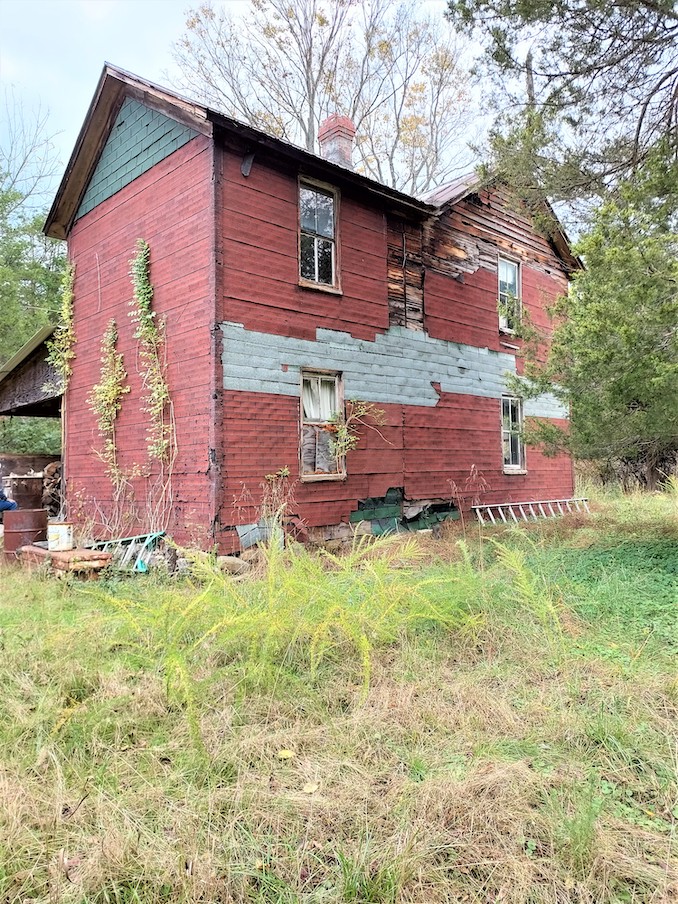
A whoop goes up, and Benson leads a charge up on overgrown driveway hidden around a curve in the gravel road. A quarter mile into the woods, there it is: the Magnolia House, (left) the holy grail that our search has been pursuing. It’s not much to look at: a two-story ramshackle building, its walls covered in red roofing shingles, a quarter of them now missing. The porch is barely propped up by stacks of bricks, and the refrigerator smells like a science experiment gone wrong.
The current owners have given us permission to visit, and it’s clear that no one lives here on a regular basis. But one bedroom is habitable, and the stove is still hooked up; someone has been using the house as a base camp for hunting. But the musicians are ecstatic to have found it. Even Floyd Domino, the pianist who joined the band later in California before moving on to play for Waylon Jennings and Merle Haggard, is happy. “I never lived here,” he says, “but I’ve been hearing stories about it for 50 years.”
Preston is upstairs in the bedroom he once shared with Gosfield. Benson is in the front yard pointing out the location of the chicken coop he converted into a private bedroom—at least for the warm months. The house has always had electricity and a wood stove, but not indoor plumbing, and Levin points out the location of the outhouse and the spring. Domino wakes up Gosfield at two in the morning in Australia and gives him a FaceTime tour of the house.
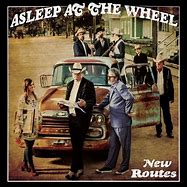
Everyone agrees that Asleep at the Wheel (right) would never have been the band it became if not for the year and a half in West Virginia. They also agree they could never have become that band if they had stayed in the state. They had to move on, so they accepted Commander Cody’s invitation to move at the end of 1971 to Berkeley, California, and Willie Nelson’s invitation to move in 1974 to Austin, Texas, where the band has been based ever since.
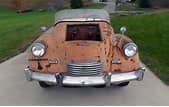
Hot Rod Lincoln (see example left) was a spoken song when its American singer-songwriter Charlie Ryan, first released it in 1955. It was written as an answer song to Arkie Shibley‘s 1950 hit Hot Rod Race (US #29).
The song describes a hot rod car race in San Pedro, Los Angeles.
As far as I am able to trace the song was last recorded as recently as 2013 by an outfit called The Chris Casello Trio, more than fifty years later- The car race is described between two hot rod cars, a Ford and a Mercury, which stay neck-and-neck until both are overtaken by “a kid in a hopped-up Model A”. Hot Rod Lincoln is sung from the perspective of this third driver, whose own hot rod is a Ford Model A body with a Lincoln V12. The song says the car “got 8 cylinders” overdrive, a four-barrel carburetor, 4.11:1 gear ratio, and safety tubes. The narrator end up being arrested by the police for his high-speed driving and describes the exasperation of his father: “He said, ‘Son, you’re gonna drive me to drinkin’ / You don’t quit drivin’ that Hot Rod Lincoln!’
Ryan’s original rockabilly version of the song was released in 1955 through Souvenir Records under the artist name Charley Ryan and the Livingston Bros.] A second version was released in 1959 through Four Star Records, credited to Charlie Ryan and the Timberline Riders.[2] Ryan based the description of the eponymous car on his own hot rod, built from a 1948 12-cylinder Lincoln chassis shortened two feet, with a 1930 Ford Model A body fitted to it. Ryan raced his hot rod against a Cadillac sedan driven by a friend in Lewiston, Idaho, driving up the Spiral Highway (former U.S. Route 95 in Idaho) to the top of Lewiston Hill. Some say he incorporated elements from this race in his lyrics to “Hot Rod Lincoln”, but changed the setting to Grapevine Hill (a long, nearly straight grade up Grapevine Canyon to Tejon Pass, near the town of Gorman, California) to fit it within the narrative of Hot Rod Race
Another version of Hot Rod Lincoln was recorded by country musician Johnny Bond and released in 1960 through Republic Records, with Bond’s lyrics changing the hot rod’s engine from a V12 to a V8. Bond released a sequel in the same year called “X-15”, set in 1997, about an air race in an X-15 plane.]

In the song, which Asleep At The Wheel still include in live shows today (as right), the Hot Rod Lincoln surpasses the Cadillac at 110 MPH, the cops come from behind and arrest the narrator for speeding and illegal street racing, and is thrown into jail, where the narrator calls his father to bail him out, where the angry father says to his son narrator: Son, You’re gonna drive me to Drinkin’, if you don’t stop driving that Hot Rod Lincoln.
I will make no further comment other than to say that my son, who´s favourite song this was, used to drive his mum´s Micra Nissan as if was really a Hot Rod Lincoln.

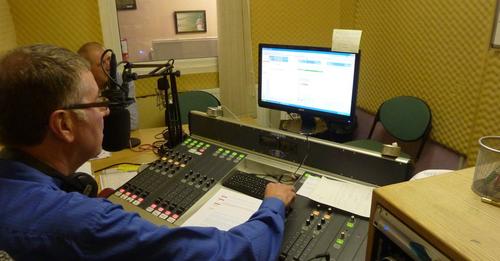
Speaking of something hot, we hear that Hot Biscuits Jazz broadcasts a feature this week with Robert Castelli and Boom, a Latin jazz fusion extravaganza. Also included will be vocal tracks from Pete McSloy from his new CD, Nicki Allan, Sue Barron and Tina May with backing from Liverpool based Frank Griffiths’ Big Band. If this sounds interesting then share it with your friends. Join us on Wednesday, or Thursday at 9pm, (GMT) or late Saturday at 11pm (GMT) at www.fc-radio.co.uk For archives of programmes presented by Steve Bewick (left) go to www.mixcloud.com/stevebewick

The primary sources for this article were an online article by Songfacts and a feature by Geoffrey Himes, published in Paste on-line magazine.
In our occasional re-postings Sidetracks And Detours are confident that we are not only sharing with our readers excellent articles written by experts but are also pointing to informed and informative sites readers will re-visit time and again. Of course, we feel sure our readers will also return to our daily not-for-profit blog knowing that we seek to provide core original material whilst sometimes spotlighting the best pieces from elsewhere, as we engage with genres and practitioners along all the sidetracks & detours we take.
This article was collated by Norman Warwick, a weekly columnist with Lanzarote Information and owner and editor of this daily blog at Sidetracks And Detours.
Norman has also been a long serving broadcaster, co-presenting the weekly all across the arts programme on Crescent Community Radio for many years with Steve, and his own show on Sherwood Community Radio. He has been a regular guest on BBC Radio Manchester, BBC Radio Lancashire, BBC Radio Merseyside and BBC Radio 4.
As a published author and poet he was a founder member of Lendanear Music, with Colin Lever and Just Poets with Pam McKee, Touchstones Creative Writing Group (where he was creative writing facilitator for a number of years) with Val Chadwick and all across the arts with Robin Parker.
From Monday to Friday, you will find a daily post here at Sidetracks And Detours and, should you be looking for good reading, over the weekend you can visit our massive but easy to navigate archives of over 500 articles.

The purpose of this daily not-for-profit blog is to deliver news, previews, interviews and reviews from all across the arts to die-hard fans and non- traditional audiences around the world. We are therefore always delighted to receive your own articles here at Sidetracks And Detours. So if you have a favourite artist, event, or venue that you would like to tell us more about just drop a Word document attachment to me at normanwarwick55@gmail.com with a couple of appropriate photographs in a zip folder if you wish. Being a not-for-profit organisation we unfortunately cannot pay you but we will always fully attribute any pieces we publish. You therefore might also. like to include a brief autobiography and photograph of yourself in your submission. We look forward to hearing from you.
Sidetracks And Detours is seeking to join the synergy of organisations that support the arts of whatever genre. We are therefore grateful to all those share information to reach as wide and diverse an audience as possible.
correspondents Michael Higgins
Steve Bewick
Gary Heywood Everett
Steve Cooke
Susana Fondon
Peter Pearson
Hot Biscuits Jazz Radio www.fc-radio.co.uk
AllMusic https://www.allmusic.com
feedspot https://www.feedspot.com/?_src=folder
Jazz In Reading https://www.jazzinreading.com
Jazziz https://www.jazziz.com
Ribble Valley Jazz & Blues https://rvjazzandblues.co.uk
Rob Adams Music That´s Going Places
Lanzarote Information https://lanzaroteinformation.co.uk
all across the arts www.allacrossthearts.co.uk
Rochdale Music Society rochdalemusicsociety.org
Lendanear www.lendanearmusic
Agenda Cultura Lanzarote
Larry Yaskiel – writer
The Lanzarote Art Gallery https://lanzaroteartgallery.com
Goodreads https://www.goodreads.
groundup music HOME | GroundUP Music
Maverick https://maverick-country.com
Joni Mitchell newsletter
passenger newsletter
paste mail ins
sheku kanneh mason newsletter
songfacts en.wikipedia.org/wiki/SongFacts




Leave a Reply
Want to join the discussion?Feel free to contribute!